Anjar
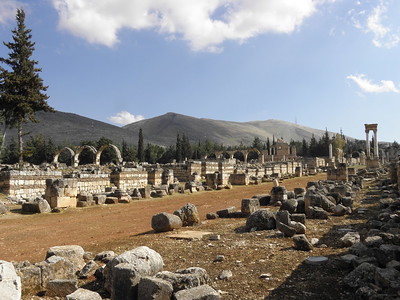
Anjar encompasses the ruins of an Umayyad trading city.
The city was founded in the early 8th century in a strategic location in the Bekaa Valley on the route between Baalbek and Damascus. It was abandoned and destroyed only some 40 years later. Its design was influenced by Roman urban planning and also shows the transition from protobyzantine styles towards Islamic art and architecture.
Community Perspective: its location close to the Syrian border and in the infamous Bekaa Valley has raised red flags over the past decades, but several reviewers made it there anyhow. It’s a low-key but interesting site that can be done as a day trip from Beirut, in combination with Baalbek.
Baalbek
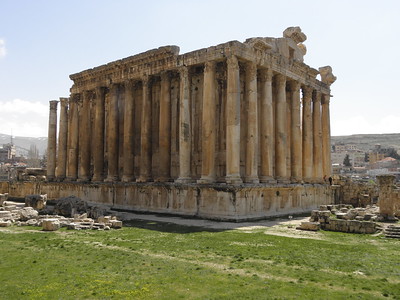
Baalbek comprises the well-preserved remains of a Roman sanctuary.
With its colossal monuments and detailed stonework, it is considered one of the finest examples of Imperial Roman architecture. At the sanctuary, called Heliopolis at the time, Phoenician beliefs and the Greco-Roman pantheon were brought together. The site attracted many pilgrims.
Community Perspective: the most stunning WHS of Lebanon, very impressive for the height and solidity of the remains and its fine setting below the snow-capped mountains.
Burgos Cathedral
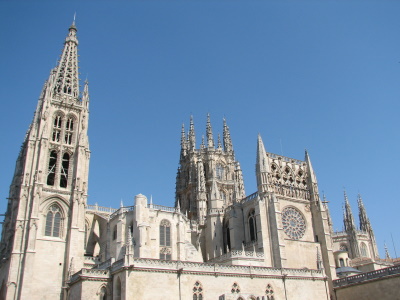
Burgos Cathedral is a masterwork of Gothic Architecture.
Began in 1221 and completed in 1567, it shows the evolution of the Gothic style. Its layout is similar to that of contemporary cathedrals in the north of France. In the 15th and 16th centuries, it was home to an international workshop where Spanish builders were trained. It’s also the burial place of early members of the Spanish Royal Family and the Spanish hero El Cid.
Community Perspective: The best Cathedral in Spain according to our reviewers! This is a large complex, with the 16th-century Golden Staircase, the Gothic Plateresque dome and the Papamoscas statue among its highlights. The audio guide is recommended.
Byblos
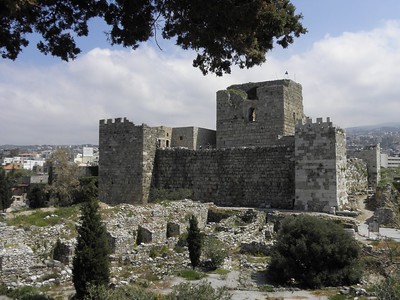
Byblos was an early Phoenician settlement and maritime commercial city, associated with the history of the diffusion of the Phoenician alphabet.
The town is believed to have been founded around 5,000 BCE, making it one of the oldest continuously inhabited sites in the world. Phoenician remains on-site include the Great Temple, the Temple of Baalat Gebal, and the Temple of the Obelisks. The archeological site holds successive layers of remains from the neolithic, chalcolithic, Assyrian, Roman, Byzantine, Muslim, and Crusader periods. The site also includes the current town of medieval and Ottoman origin.
Community Perspective: Byblos is the most touristy of Lebanon’s WHS and it has a pleasant coastal Mediterranean setting. The Crusader Castle is the dominant feature.
Canadian Rocky Mountain Parks
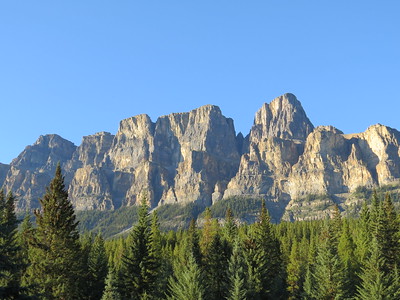
The Canadian Rocky Mountain Parks form a striking mountain landscape, that includes a full range of glaciation features and harbours the renowned Burgess Shale fossil site.
The seven contiguous parks are aligned along the Continental Divide, separating the drainage basins of the Arctic, Pacific, and Atlantic oceans. They hold glaciers, canyons, waterfalls, karst systems and thermal springs. The Burgess Shale preserves the fossils of soft-bodied marine organisms, and it is one of the earliest areas of those so far found.
Community Perspective: You need multiple days or even weeks here as the combined parks cover a large area. The majestic mountains and cold glaciers in the national parks of Banff, Jasper, Kootenay and Yoho have been well-covered in the reviews, and especially Banff and Jasper can feel crowded. Jay has described a visit to the lesser-known Mount Robson Provincial Park.
Cartagena
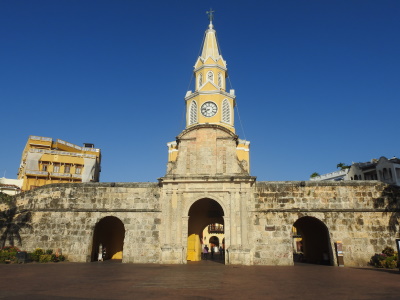
The Port, Fortresses and Group of Monuments, Cartagena, comprise a port city and the remains of military constructions built by the Spanish.
Cartagena de Indias holds a strategic position at the commercial maritime routes in the Caribbean. From the 16th century on, the Spanish designed a defense plan to protect the city against the plundering of English, Dutch and French pirates. It led to one of the most extensive and complete systems of military fortifications in South America. Within the walled city, three neighbourhoods developed with fine civil, religious and residential monuments.
Community Perspective: the overall feel is much more Caribbean than South American, and one can easily spend 2 days here walking the city walls and exploring the historic center. But “it is so fully geared to tourism that sooner or later you will get fed up with it”.
Castles of Augustusburg and Falkenlust
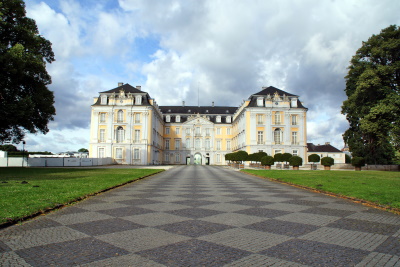
The Castles of Augustusburg and Falkenlust at Brühl are considered masterpieces of the rococo.
They were developed in the 18th century as the residence and hunting lodge for Clemens August, the archbishop and worldly ruler of Cologne. Augustusburg was created with a lot of help from artists like Balthasar Neumann who is responsible for the magnificent marble staircase. Falkenlust was used for the sport of falconry. Both are surrounded by French formal gardens.
Community Perspective: The staircase at Augustusburg is the must-see here, and you’ll have to join a tour for that.
Chitwan National Park
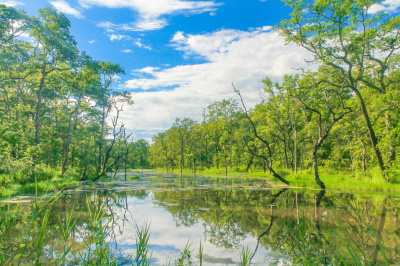
Chitwan National Park covers a riverine landscape that is home to the second-largest population of Great One-horned Rhinoceros in the world.
Its Siwalik and inner Terai ecosystems are the last major surviving examples of the natural ecosystems of the Terai. They comprise a river valley basin covered with a mix of riverine forests and alluvial flood plains. This proves to be an excellent habitat for the Rhinoceros, as well as for the Bengal Tiger and over 350 bird species.
Community Perspective: You’re guaranteed to see the Rhinos here, but you should not go to Chitwan with the prime objective of seeing a tiger. Also, the overall Safari experience is considered less good than in Africa; some even call it ‘boring’.
Cordoba

The Historic Centre of Cordoba comprises its Mosque-Cathedral and surrounding quarters, a testimony to its blossoming during the Islamic Caliphate of Cordoba.
After 711 CE, Cordoba was turned into a powerful Islamic city that was meant to rival the splendors of Constantinople, Damascus and Baghdad. Mosques, palaces and public buildings were erected. After the Siege of Córdoba in 1236, which was won by the forces of the Christian King of Castile, the Great Mosque was turned into a cathedral and new defensive structures were erected. The Mosque’s design remained influential on Western Islamic art and the 19th-century neo-Moorish style.
Community Perspective: In addition to the former Mosque and its forest of pillars, the Alcazar and its gardens and the Capilla Mudejar de San Bartolome are also amazing. The rest of the historic centre is deemed too overly touristy.
El Escurial

The Monastery and Site of the Escurial, Madrid, are an expression of the Catholic Counter-Reformation and the Spanish Golden Age.
El Escurial was built at the behest of King Philip II in 1563 as a place for prayer and a pantheon to the Spanish monarchs. It was further extended in the 18th century into a royal seat and a symbol of the power of the monarchy. The massive complex is a basilica, royal palace, monastery, seminary, library and mausoleum in one.
Community Perspective: It’s often busy, offers the usual (boring) palace tours and is closed on Mondays. The austere buildings have “occasional flourishes of fine decoration”. The highlights inside are the painted ceilings, the royal crypt, the 50-metre-long wall painting in the Hall of Battles and the tapestry collection in the Bourbon Palace.
Granada

The Alhambra, Generalife and Albayzín in Granada are exceptional reminders of Moorish Spain and hold the best examples of Nasrid art in their architecture and decorative aspects.
The Alhambra, built during the reign of the Nasrid Dynasty, was a palatine city complete with an irrigation system for the lush and beautiful gardens of the Generalife. The Palacio de Generalife was their summer palace and country estate. The Albayzin is an old residential neighborhood in Granada that has both Moorish and Andalusian influences.
Community Perspective: You can easily spend a whole day at the Alhambra and Generalife alone. From the Mirador de San Nicolas in Albayzin you get spectacular views (best in the afternoon) of the Alhambra complex.
Iguazu National Park
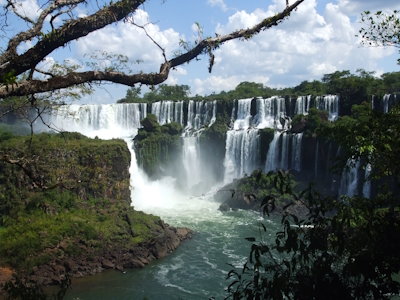
Iguazu National Park holds one of the world's most spectacular waterfalls and is the habitat of rare and endangered species.
The waterfalls on both sides of the international border span over 2700m and have a height of 80 m. The spray creates a micro-climate that is favourable for lush sub-tropical vegetation. The riverbanks support fauna such as birds, caiman and various cat species. The park also protects a remnant of the Atlantic Forest, with high species diversity and a high rate of endemism.
Community Perspective: The common opinion seems to be that the Brazilian side is the better to view the extent of the waterfalls, and the Argentine side the better to get up close to the falls. Devil's Throat is the highlight here.
Lake Malawi
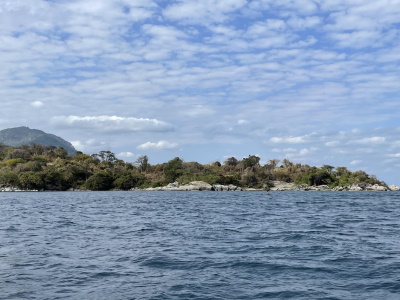
Lake Malawi National Park holds over 500 fish species (over 90% endemic), which makes it a key example of specialized evolution.
Most noteworthy among the fish are the cichlids (rockfish), with 345 species endemic to the park, which are an object for scientific study because of their rapid increase in species diversity. With its Rift Valley escarpment backdrop, this freshwater lake also is of exceptional beauty. The lake is the third largest and second deepest lake in Africa.
Community Perspective: for starters, the core zone only covers the southern part of Lake Malawi, including Cape Maclear Peninsula. From Cape Maclear you can arrange snorkeling trips “to see the beautiful variety of fish that gather in the rocks just off the nearby islands as well as Otter Point at the far end of the park”. Catamaran trips to see the rockfish and diving excursions are also on offer. The lodge on remote Mumbo Island comes recommended.
Mahabalipuram
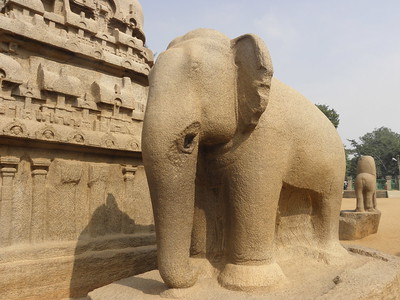
The Group of Monuments at Mahabalipuram consists of temples and reliefs from the Pallava dynasty, known for their sculptures carved out of rock.
Mahabalipuram was a 6th-7th century seaport of the South Indian Pallavas and a major centre of the cult of Siva. The sculptures were hewn out of local granite. They fall into four different categories by mode of execution: rock-cut caves, monolithic temples hewn out of a large boulder, bas-reliefs in the open air, and structural temples. The bas-relief known as Arjuna’s Penance is considered to be a unique artistic achievement.
Community Perspective: An easy start to a trip to South India, as it is doable on a day trip from Chennai. The amount of “guides” and “photographers” can be a nuisance here.
Mana Pools

Mana Pools National Park, Sapi and Chewore Safari Areas are renowned for their wildlife gatherings during the dry season.
The three conservation areas are situated in the Zambezi Valley, along the Middle and Lower Zambezi Rivers. Mana Pools is centered around four large permanent pools. The river and the sandbanks that are formed by erosion and deposition form a refuge for species such as elephants, buffalo, lions, wild dogs, Nile crocodiles and hippos.
Community Perspective: uncrowded (although that is rapidly changing), “an utterly wild place, sleeping outside with the sound of roaring lions, whooping hyenas and grunting hippos”. Els went camping and has provided practical info on how to visit this remote park, while Svein described the experience from Vundu Camp which has a private concession.
Salonga National Park
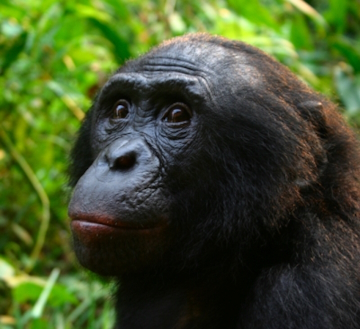
Salonga National Park is Africa's largest tropical rainforest reserve.
It is a very isolated park, located in the central basin of the Congo River and crossed by many rivers. The park can only be reached via water transport, and in parts is considered to be completely virgin. Its marshlands and forests are home to many endangered fauna species, notably the bonobo.
Community Perspective: this site has been unreviewed so far.
Statue of Liberty

The Statue of Liberty is a gigantic neoclassical sculpture of high symbolic value.
The hollow statue was constructed in the studios of Bartholdi in Paris, where Gustave Eiffel designed its metallic skeleton. It was a gift from France on the centenary of American Independence in 1886 – the statue holds America’s Declaration of Independence in her left hand. The Statue welcomed immigrants to the New York harbour, and is symbolic for the populating of the United States in the second half of the 19th century.
Community Perspective: this is among the most visited sites in our community, and “the statue was large and the queues were long” may summarize it nicely. It can be viewed from the Bay via the triangle ride Manhattan - Liberty Island - Ellis Island, the free Staten Island ferry, or the Governor’s Island ferry. The pedestal access ticket seems to be the best choice for those who want to see the Lady up close.
Sun Temple, Konarak
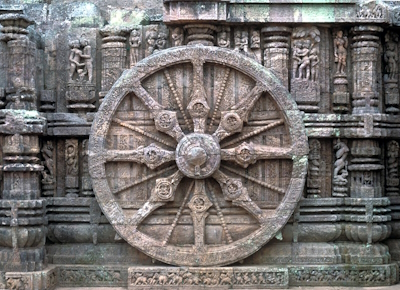
The Sun Temple, Konarak is a 13th-century Hindu temple complex in the form of a huge chariot.
The temple is representative of the Brahman Sun Cult (Surya), which was spread here from Kashmir. The entire complex was designed in the form of a huge chariot drawn by seven spirited horses on twelve pairs of exquisitely stone-carved wheels. The sculptural narrative provides insight into the life of the people in the (Eastern) Ganga empire.
Community Perspective: the intricate carvings are the highlight of the site. Overall, the temple complex is quite small and needs about an hour. Take a pair of binoculars (or a strong zoom camera) to see the decorations at the higher part of the temple.
Tyre
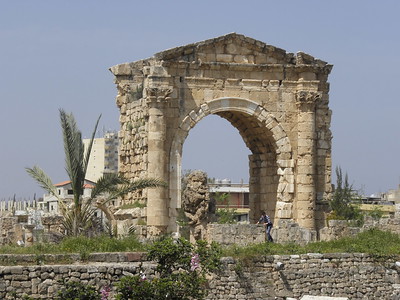
Tyre comprises the remains of the largest mercantile city of the Phoenicians.
In its commercial heyday around 1,000 BCE, the people of Tyre founded colonies from Greece to Carthage and Cadiz. The city was particularly known for the production of a rare and expensive sort of purple dye. The city over the ages saw Greek, Roman, Byzantine, Arab, Crusader, and Mameluk conquerors, of which the remains from Roman and Crusader times are the most prominent.
Community Perspective: The Hippodrome and necropolis are especially recommended. Tyre lies close to the border with Israel, so security warnings are often in place.
Vatican City

Vatican City is an important site in the history of Christianity that is also known for its Renaissance and Baroque artistic creations.
Since the foundation of Saint Peter’s Basilica by Constantine (4th century), the Vatican has been a main pilgrimage center and later became the permanent seat of the Popes of the Roman Catholic Church. It holds many important examples of sacred architecture and art created since the 16th century, including the Sistine Chapel.
Community Perspective: Even if you are not Christian or not a believer, you can´t fail to be impressed by these monuments. The best attractions are the Vatican Museums (where the Sistine Chapel also can be found) and the Dome of St. Peter's Basilica. Both are always crowded, so pre-book what you can.
Works of Antoni Gaudí

The Works of Antoni Gaudí represent the creative architectural works of this Modernist architect.
The Works consist of seven of his buildings from the late 19th and early 20th centuries in and around Barcelona. They comprise both private residences and public works, including their gardens, sculptures and other works of art. His eclectic style was unique and individual, and made use of modern construction techniques.
Community Perspective: Hard to miss when you’re in Barcelona as especially the Sagrada Familia and Parque Güell are major tourist attractions. Try to get into one of the residences such as Casa Mila (described by Ian, Hubert, Ilya), Casa Vicens (by Tonisan) or Casa Batlló (by Els, Hubert, Ilya) for a more up-and-close experience.
Yosemite National Park

Yosemite National Park is a glacial landscape with geologic features of exceptional beauty.
This landscape was created as a result of repeated periods of glaciation. It holds unique and pronounced landform features, such as deeply incised valleys and granitic domes like Half Dome and El Capitan. The park is also known for its many high waterfalls, alpine meadows and groves of giant sequoias.
Community Perspective: it gets very busy – especially on weekends and national holidays - but if you allow 2 days or more you can get away from the main tourist routes (Kyle provides tips). Both summer and winter visits are rewarding.
Extended Sites in 1984
Jesuit Missions of the Guaranis
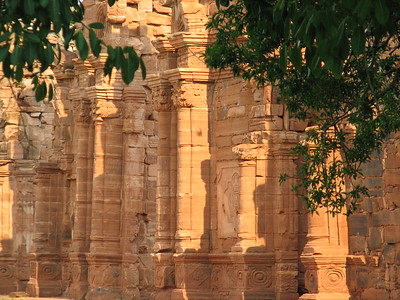
The Jesuit Missions of the Guaranis are the archeological remains of towns created by the Jesuit Order.
The towns existed between 1609 and 1818, and aimed to socially, culturally and religiously elevate the local Guarani communities. They also provided protection and economic stability. These so-called reducciones included agricultural lands such as mate plantations as well.
Community Perspective: San Ignacio Mini in Argentina is its best-known component (it even comes with a sound-and-light show), while São Miguel das Missões has a remarkable façade. Nan and Timonator speak highly of Loreto in Argentina.
Davis C. Bales Brazil resident; U.S. citizen - 01-May-05
San Ignacio Mini is well worth the visit for anyone at nearby Iguassu Falls, whether on the Argentine or Brazilian side. Though there are guided tours available from Iguassu, driving on your own is quite easy. It is possible to drive to San Ignacio and back in the same day though spending the night adds to the experience. However, the town offers few accomodations, the best of which are hard-pressed to earn a 1-star rating. From Buenos Aires it is not so easy to reach Argentina's State of Misiones.
Read On